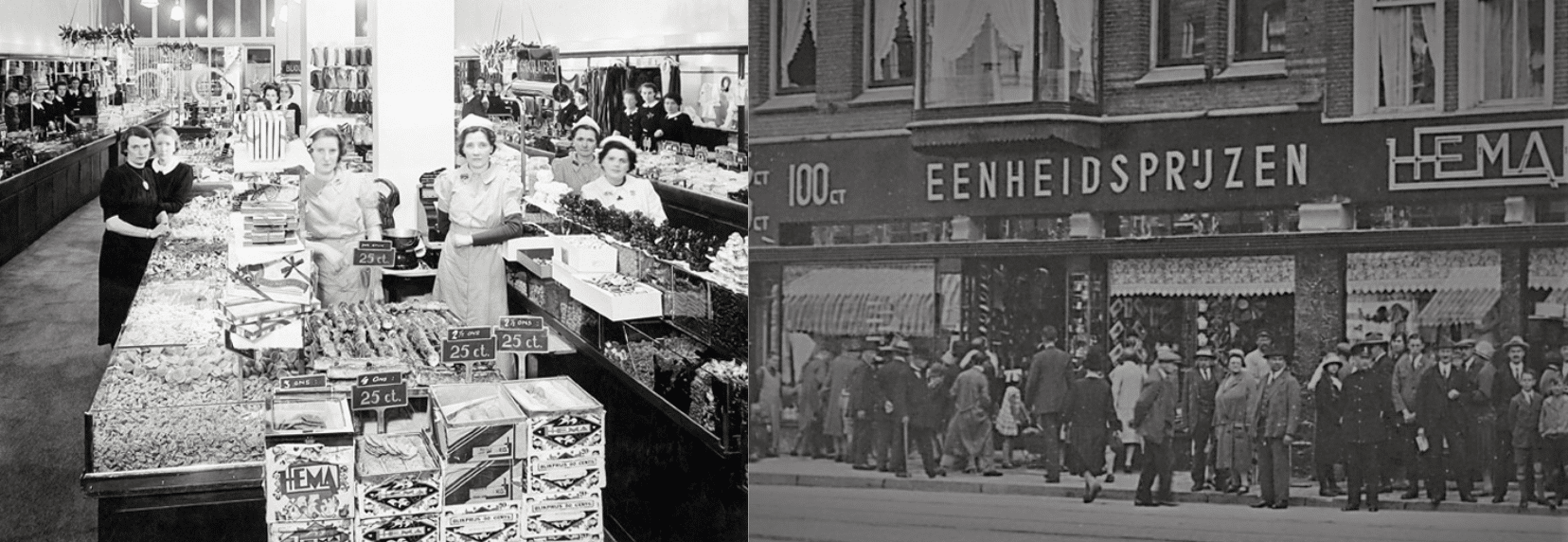Whoever visits the Netherlands, can’t ignore them. Sooner or later you walk into one of the 550 Hema shops to buy a bicycle bell, sandwich or stapler. The brand is as Dutch as the tulip.
‘We go to Hema to buy underpants and smoked sausages,’ a Dutch friend told me. ‘Which is why all Dutch people’s underpants stink of smoked sausages,’ he added.
Hmm, you think. Not a great advert. But the Dutch love to shop in Hema. The main reason being that it’s cheap. But it’s also stylish. It’s not trashy.
The first Hema opened in the Kalverstraat in Amsterdam in 1926. Founded by the elegant department store De Bijenkorf (The Beehive), it was originally called the Hollandsche Eenheidsprijzen Maatschappij Amsterdam (Holland Standard Prices Company Amsterdam). In the beginning, everything had a fixed price tag of 10, 25 or 50 cents.
 First Hema shop in Amsterdam (1926)
First Hema shop in Amsterdam (1926)The stores spread across the Netherlands until today almost every town has a branch. The Dutch go there for their children’s clothes, bike parts, notebooks, curtains and food. With more than 500 outlets, Hema is now a Dutch institution, something that shapes the national character as much as tulip bulbs or bicycles.
But something changed in 2007. The chain lost something of its Dutch identity when it was acquired by a British private equity firm. People complained that the quality went down while the prices stayed the same. The writer Stefan Vermeulen wrote about the hostile British takeover in a book titled simply Hema (the cover illustrated with an iconic Hema sausage).
The British sold Hema in 2017 and the chain is now back in Dutch ownership. Vermeulen sees it as a new beginning for a brand that is the ultimate Dutch icon. But not everything is as it was. ‘It’s now more about profits, and less about smoked sausages,’ he concedes.












